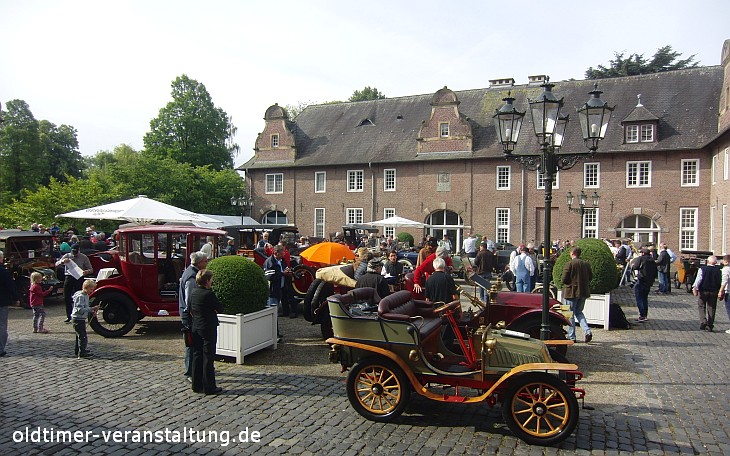Few innovations have had such a deep impact on the course of history and have shaped our civilization like the invention of the automobile. And few have attracted such an enormous number of talented, creative and visionary people from the very beginning like the horse-less carriage. As most classic car enthusiasts are focused on the period from the 1930s to 1970s they hardly have an idea of the fascinating variety of technical concepts, solutions and not least marques that emerged, blossomed and often fell into oblivion again at the turn from the 19th to the 20th century.
Reviving the spirit of these pioneer days is the ambition of Marcus Herfort and his team of vintage car enthusiasts that has already initiated the highly successful “Classic Days” festival at Schloss Dyck in the Rhineland. Their inspiration was a historic event which took place in the Lower Rhine region in 1907.
In that year the German crown prince Wilhelm made a visit to Düsseldorf 25 miles north of Cologne. The crown prince was known to be a keen car enthusiast, and a local car dealer was allowed to provide a 70HP Mercedes exclusively for his use. The news also made its way to Heinrich Graf von Schaesberg-Tannheim who lived 50 miles away on Schloss Krickenbeck. Being himself an advocate of the still young invention, he decided to use the crown prince’s visit as an opportunity for a trip by car to Düsseldorf.

In memory of this event Marcus Herfort launched the “Kronprinz Wilhelm Rasanz” run in 2013. As Düsseldorf today is a rather unpleasant place for veteran cars, it was decided to let the cars make a tour from Schloss Krickenbeck to the moated castle Schloss Dyck and back, mostly on quiet country roads.
Eligible for the run were cars belonging to the following FIVA (Fédération Internationale des Véhicules Anciens) classes: A (Ancestor), manufactured until 1904, B (Veteran), manufacture date between 1905 and 1918, C (Vintage), manufactured between 1919 and 1930 (selected by the organiser). While the starter field comprised only 25 cars in 2013, the number of participants already rose to 55 in 2014. The bulk of cars had German owners, but the success of the first event also attracted enthusiasts from Austria, France, Switzerland and the U.K. who greatly contributed to the stunning variety of marques in the 2014 run.
Quite a number of the participating cars came from manufacturers who stopped production as early as the end of the First World War. The run was a worthy memento of many forgotten marques like Autocar, Bayard, Brassier, Brennabor, De Dion Bouton, Duhanot, Clement, Charron, Guerry et Bourguignon, Leon Buat, Le Zebre, Locomobile, Martini, Maxwell, Mercer, Minerva, Overland, Panhard Levassor, Premier, Richard Brasier, Spyker, Star, and Swift.
With his hugely successful launch of the “Kronprinz Wilhelm Rasanz” run, Marcus Herfort is himself a pioneer, as events for cars from the dawn of motoring still are extremely rare in Germany. But this appears to change gradually, as the owners of veteran cars increasingly realize that they have to show their treasures to the public rather than just keep them in private collections and museums. In a world where hardly any device can be understood or repaired by an amateur and the underlying processes cannot be perceived by the senses anymore, veteran cars with their visible and accessible mechanics provide an almost unique experience.
The number of pure veteran car events in Germany may be still modest. But the immediate success of pioneering events like the “Kronprinz Wilhelm Rasanz” gives rise to hopes that the enthusiasm for the survivors from the early days of motoring can be passed to the future in our country, too.
Details on the “Kronprinz Wilhelm Rasanz” run 2015 as well as a lovely film about the 2013 event are available online under: www.anno-1907.de
Source: Michael Schlenger
